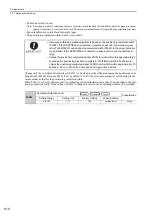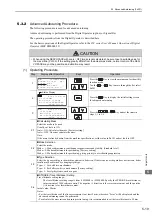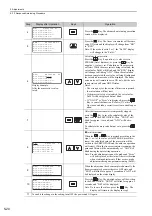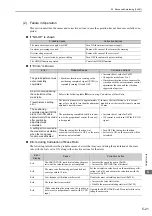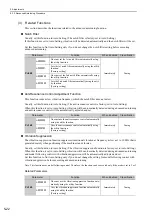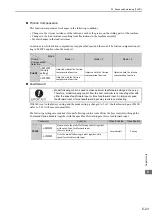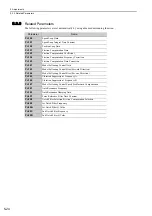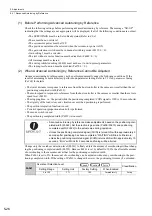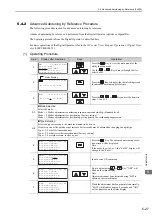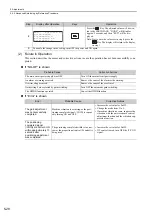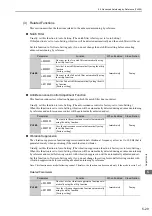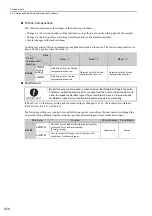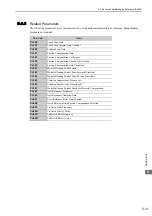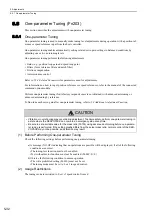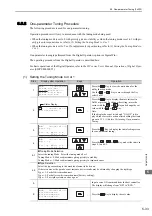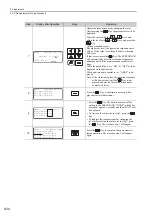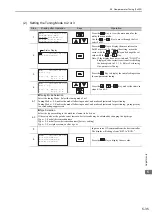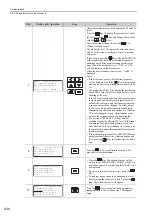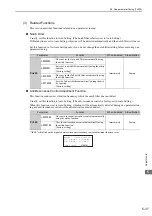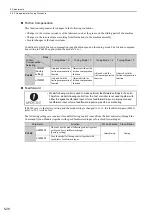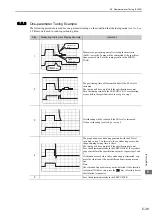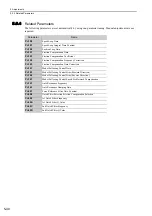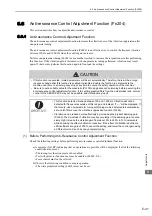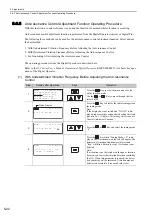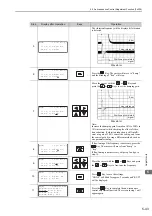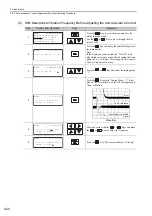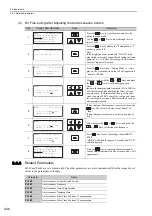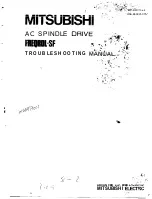
5 Adjustments
5.5.1 One-parameter Tuning
5-32
5.5
One-parameter Tuning (Fn203)
This section describes the adjustments with one-parameter tuning.
5.5.1
One-parameter Tuning
One-parameter tuning is used to manually make tuning level adjustments during operation with a position ref-
erence or speed reference input from the host controller.
One-parameter tuning enables automatically setting related servo gain settings to balanced conditions by
adjusting one or two autotuning levels.
One-parameter tuning performs the following adjustments.
• Gains (e.g., position loop gain and speed loop gain)
• Filters (force reference filter and notch filter)
• Friction compensation
• Anti-resonance control
Refer to
5.5.4 Related Parameters
for parameters used for adjustments.
For information on how to input position references or speed references, refer to the manual of the connected
command option module.
Perform one-parameter tuning if satisfactory responsiveness is not obtained with advanced autotuning or
advanced autotuning by reference.
To fine-tune each servo gain after one-parameter tuning, refer to
5.8 Additional Adjustment Function
.
(1) Before Performing One-parameter Tuning
Check the following settings before performing one-parameter tuning.
a) A message (NO-OP) indicating that no operations are possible will be displayed, if all of the following
conditions are not met.
• The tuning-less function must not be enabled.
• Test without motor function must not be enabled. (Pn00C.0 = 0)
b) Observe the following condition to ensure operation.
• The write prohibited setting (Fn010) must not be set.
• The tuning mode must be set to 0 or 1 in speed control.
(2) Usage Restrictions
The tuning mode is restricted to 0 or 1 if speed control is used.
CAUTION
• Vibration or overshooting may occur during adjustment. To ensure safety, perform one-parameter tuning in
a state where the SERVOPACK can come to an emergency stop at any time.
• Be sure to set a suitable value for the mass ratio (Pn103) using advanced autotuning before one-parame-
ter tuning is performed. If the setting greatly differs from the actual mass ratio, normal control of the SER-
VOPACK may not be possible, and vibration may result.

